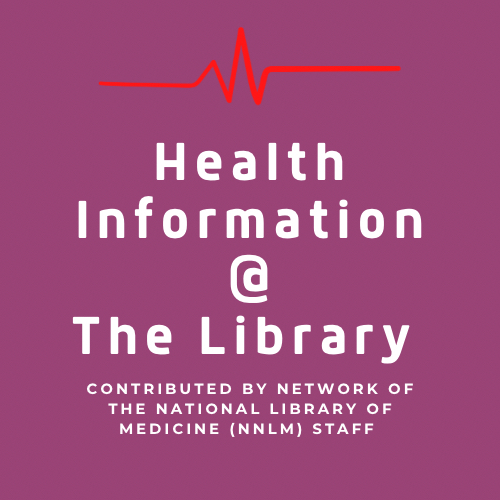Be Ready, Be Informed: Raising Awareness of Resources to Support Emergency Preparedness

September is National Preparedness Month, an annual observance established by the Federal Emergency Management Agency (FEMA) to raise awareness and promote resources on planning for emergencies. Preparedness efforts can include emergency events like natural disasters (e.g. hurricanes, floods, wildfires, etc.), human-caused events (i.e. mass shootings, oil spills, etc.), pandemics, and technological hazards (i.e. cyberattacks, power plant failures, etc.).1
The Network of the National Library of Medicine (NNLM) is committed to providing training and support to libraries and communities to better prepare for and respond to emergencies. In recent years, cyber threats and extreme weather events have emerged as prominent threats to communities. This year’s NNLM Virtual Disaster Preparedness Forum features topics on cybersecurity and climate resilience with guest speakers from the National Rural Health Association and Office of the Assistant Secretary for Health. Registration is open for these free webinars.
Wednesday, September 18, 2024 from 2:00 PM – 3:00 PM EDT
- Climate Resilience Resources from the Office of the Assistant Secretary for Health Wednesday, September 25, 2024 from 2:00 PM – 3:00 PM EDT
During National Preparedness Month, libraries can significantly enhance community resilience and emergency preparedness. As trusted sources of information, community hubs, and often safe havens during crises, libraries are well-positioned to make an impact.2 Here are some ways libraries can contribute:
- Education and Resources: Libraries can provide access to a wide range of resources on emergency preparedness, including books, pamphlets, online databases, and workshops. They can host educational events or partner with local emergency management agencies to disseminate information on how to prepare for disasters. Potential resources to include in awareness efforts are available later in this article in the Resources & Guides
- Emergency Planning and Drills: Libraries can organize drills and offer workshops on creating emergency plans, building emergency kits, and understanding local hazards. They can also make available checklists and guides provided by organizations like FEMA and gov.
- Community Outreach and Engagement: Libraries can distribute information on local emergency plans, such as evacuation routes and shelter locations. They can also collaborate with local organizations to provide targeted outreach to vulnerable populations, including the elderly, people with disabilities, and non-English speakers.
By integrating these roles into their services during National Preparedness Month, libraries can help build stronger, more resilient communities that are better equipped to handle emergencies.
Preparedness Plans for Libraries
Libraries are susceptible to disasters and emergency events too. Events such as fires, floods, hurricanes, pandemics, and even man-made crises like cyberattacks can cause significant damage to library facilities and collections. In some cases, libraries might even serve as emergency shelters or information hubs during crises, making their preparedness plans even more critical. In recent years, libraries have increasingly become targets of ransomware attacks. 3 These events pose serious risks to libraries, leading to potential data loss and service disruptions, often resulting in high costs from ransom payments, data recovery efforts, IT infrastructure repairs, and operational downtime.
Resources & Guides
Below are helpful resources to aid various users, including libraries, local communities, healthcare institutions, and the public in preparedness planning and response efforts.
The American Library Association (ALA) guide on Library Disaster Preparedness & Response offers resources for libraries to prepare for, respond to, and recover from disasters. It includes emergency assistance contacts, a bibliography of essential readings, and links to organizations providing disaster support. The guide emphasizes the importance of having a disaster plan and provides tools for safeguarding collections, facilities, and ensuring continuity of operations during emergencies.
The Centers for Disease Control and Prevention (CDC) offers resources and information on how to prepare for, respond to, and recover from various public health emergencies. It covers topics like natural disasters, pandemics, bioterrorism, and more. The page also provides guidelines for healthcare professionals, emergency responders, and the public, along with communication tools, training resources, and updates on ongoing public health emergencies.
This webpage provides community programs and guidance, planning guides for emergency operations, and pre-disaster recovery planning for tribal, state, and local governments. Risk management educational resources are also available for parents and teachers (including downloadable coloring books for children).
- NNLM Emergency and Disaster Resources Guide
This guide serves as an online collection of resources and tools that are relevant to disaster and emergency management. Preparedness, response, and recovery resources are included for each phase of crisis planning. Federal and state resources and contact information are listed by region. - NNLM Reading Club’s Disasters and Emergencies Topic Page
The NNLM Reading Club is an initiative designed to promote health literacy and encourage discussions about health topics through book clubs. The program provides libraries, community organizations, and individuals with resources to start or enhance book clubs that focus on health-related themes. The Disasters and Emergencies topic page provides suggested readings and links to relevant preparedness tools and promotional materials.
- Ready.gov
An official website of the U.S. Department of Homeland Security, Ready.gov is a public service website designed to educate and empower the American people to prepare for, respond to, and mitigate emergencies and disasters. The site offers easy-to-follow checklists, downloadable guides, and links to additional resources to help people become more resilient in the face of potential disasters. A Spanish-language version of the website is available.
References:
- Substance Abuse and Mental Health Services Administration (SAMHSA). “Disaster Types.” SAMHSA Disaster Distress Helpline. Accessed August 19, 2024. https://www.samhsa.gov/find-help/disaster-distress-helpline/disaster-types.
- Ansari, Anam J., Priya Vaidya, Basharat A. Malik, and P.M. N. Ali. “Preparing for the Unthinkable: A Systematic Look at Disaster Preparedness in Libraries.” International Journal of Disaster Risk Reduction 108, (2024): 104551. Accessed August 26, 2024. https://doi.org/10.1016/j.ijdrr.2024.104551.
- Caverly, Will. “Ransomware Attacks at Libraries: How They Happen, What to Do.” Public Libraries Online, May 10, 2021.
https://publiclibrariesonline.org/2021/05/ransomware-attacks-at-libraries-how-they-happen-what-to-do/
Tags: emergencypreparedness, nationalpreparednessmonth, preparednessplansforlibraries












